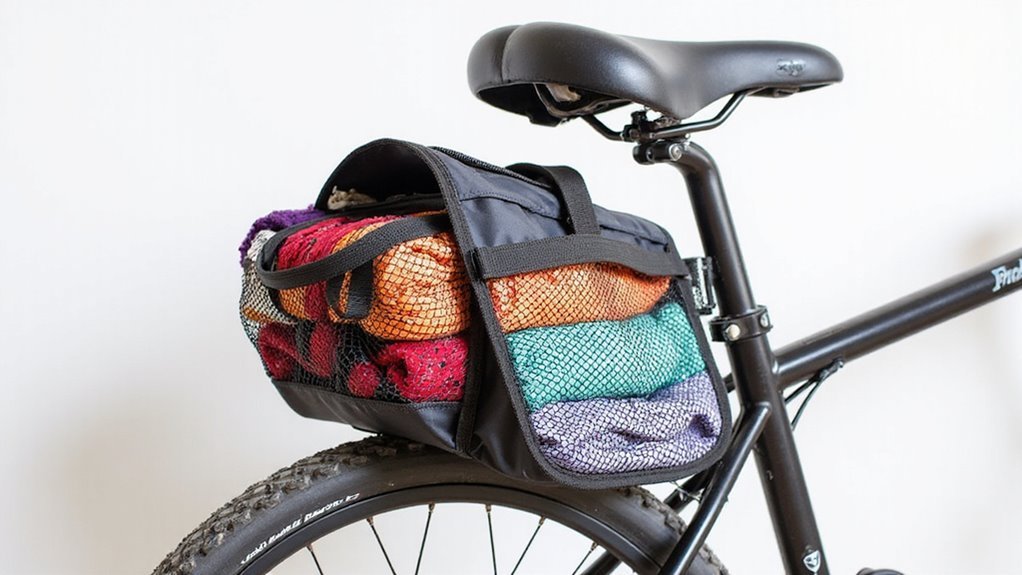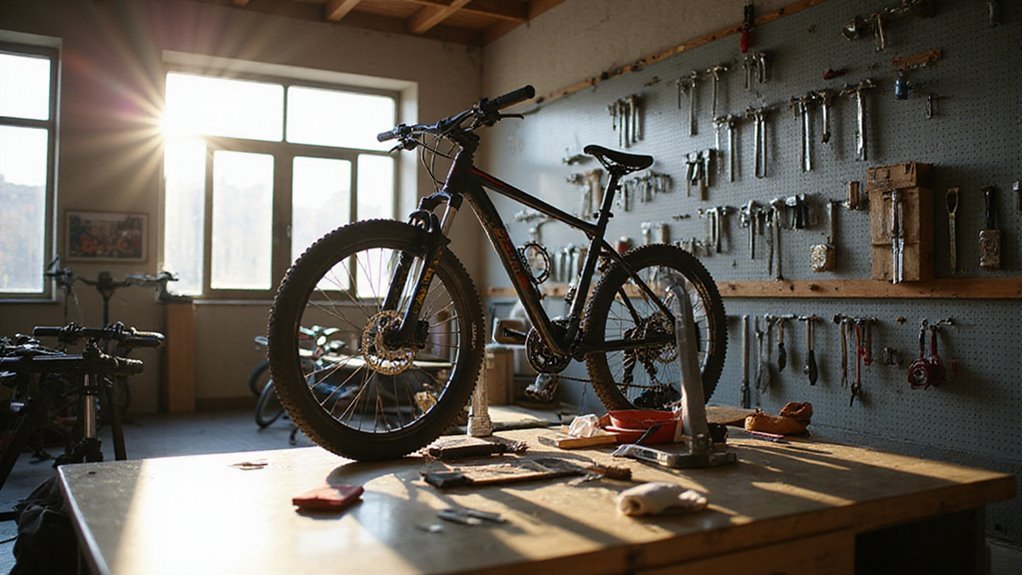Time is a relentless adversary in the battle to preserve our cherished possessions. We’ll show you how to win that fight with proven storage strategies that maximize longevity. From selecting the right containers to maintaining ideal environmental conditions, every detail matters in protecting your items. Let’s cut through the clutter and explore the essential techniques that’ll transform your storage game from amateur to expert-level preservation.
Essential Storage Container Selection

When it comes to protecting your valuables during storage, selecting the right containers makes all the difference.
We’re adamant about using high-quality plastic storage containers with tight-fitting lids – they’re your first line of defense against moisture damage and unwanted pests.
Skip those cardboard boxes; they’re pest magnets asking for trouble.
For textiles, we’ll always recommend vacuum-sealed bags.
Don’t forget clear labeling on everything – waterproof tags are non-negotiable.
And here’s a pro tip: wrap delicate items in acid-free tissue, never newspaper.
When properly packed in the right containers, your belongings will survive long-term storage like champions.
Climate Control and Environment Management
The right storage containers mean nothing without proper climate control – that’s just science.
Proper environment management prevents damage to your stored items through strategic temperature and humidity control. We’re talking about protecting everything from wood furniture to electronics.
Here’s what you need to know:
- Maintain humidity at 50% and consistent temperatures to prevent warping and mold.
- Keep items away from UV exposure and direct sunlight to avoid fading.
- Regularly inspect your storage environment and use dehumidifiers in non-climate controlled spaces.
Strategic Packing Methods

Smart packing methods serve as your first line of defense against storage disasters.
We’ll help you implement strategic packing methods that’ll keep your items pristine. Start with acid-free boxes and heavy-duty plastic containers with tight-fitting lids – they’re your best friends for long-term storage.
For fragile items, wrap them in bubble wrap or foam padding (skip the newspaper, trust us). Label everything with waterproof tags and maintain a detailed inventory list.
Elevate those boxes on shelves or pallets – it’s not just for show, it prevents water damage and promotes airflow. Regular inspections are non-negotiable.
Organization and Labeling Systems
Because organization makes or breaks your storage success, let’s establish a bulletproof labeling system that’ll save your sanity.
We’ll transform your storage units into a well-oiled machine with unbeatable longevity.
- Label every box with contents and dates using a label maker or thick marker – visible from twenty feet away.
- Create a detailed inventory list with precise locations, then maintain a storage unit map for quick navigation.
- Implement color-coding for instant visual organization – blue for kitchen items, red for documents, green for seasonal.
Trust us, this systematic approach to labeling and organization guarantees easy access whenever you need it.
Preventive Maintenance Practices

While proper labeling keeps your storage organized, it’s only half the battle. Regular inspections and preventive maintenance are essential for storing items long-term. We recommend keeping items off the ground and using moisture absorbers to prevent mold growth and damage.
| Prevention | Action | Frequency |
|---|---|---|
| Moisture | Dehumidifiers | Monthly check |
| Pests | Inspect boxes | Every 3 months |
| Damage | Clean before storing | Each use |
In climate-controlled units, maintaining 50% humidity helps preserve your belongings. Don’t skip regular inspections – they’re your first line of defense against potential issues. Remember to keep a detailed inventory and update it whenever you add or remove items.
Security and Access Considerations
Although storage units provide a secure space for your belongings, choosing a facility with robust security measures is non-negotiable.
We’ll help you maximize protection through smart access management and vigilant oversight.
- Select facilities with 24/7 surveillance, electronic gate access, and well-lit areas – these aren’t luxuries, they’re necessities.
- Match access hours to your schedule and establish clear access protocols for authorized users.
- Conduct regular inspections of your storage unit and lock, while maintaining additional insurance coverage for extra peace of mind.
Remember: unauthorized access isn’t just about break-ins.
Smart security starts with your own diligence at the storage facility.
Damage Prevention Techniques

Once you’ve secured your storage unit, proper damage prevention becomes your next critical mission. We’ll show you how to shield your belongings from moisture damage and prevent mildew during long-term storage. Let’s start with these essential techniques.
| Prevention | Method | Benefit |
|---|---|---|
| Use plastic bins | Tight-fitting lids | Blocks moisture/pests |
| Elevate items | Pallets/blocks | Air circulation |
| Add silica gel | In containers | Controls humidity |
For delicate items, we recommend acid-free packing materials – never newspapers. Keep storage containers off the ground, maintain ideal humidity levels, and rotate items regularly. It’s not just about storing; it’s about preserving.
Space Optimization Strategies
With your belongings properly protected, let’s maximize every inch of your storage space. Smart space optimization strategies start with vertical thinking – stack plastic bins carefully, heavy items down. Multi-functional furniture and storage units transform dead space into prime real estate.
- Invest in shelving units for accessible storage solutions that keep seasonal items organized.
- Use clear labeled containers to instantly spot what you need.
- Master the art of nesting – smaller containers inside larger ones maximize space efficiency.
We’re keeping everything visible, accessible, and perfectly arranged. Think vertically, label clearly, and nest strategically. Your storage space just became a masterclass in organization.
Inspection and Monitoring Protocols

Since proper monitoring can make or break your storage success, let’s establish a robust inspection protocol.
We’ll check storage items every 3-6 months, armed with a systematic checklist to catch damage, moisture, or sneaky pest infestations.
Temperature and humidity monitoring is non-negotiable – keep it at 50% humidity and avoid extremes that’ll wreck your stuff.
Don’t wing it – maintain a detailed inventory list and document every inspection.
When we spot issues, we tackle them immediately.
Trust us, this militant approach to monitoring means the difference between preservation and deterioration.
Your items’ longevity depends on it.
Frequently Asked Questions
What Is the Best Option for Long-Term Storage?
We’ll get the best results using climate-controlled units with airtight containers and vacuum sealing. Don’t forget moisture control, pest prevention, clear labeling systems, and temperature stability using durable materials.
What Is the Best Method for Long-Term Food Storage?
We recommend freeze-drying techniques and vacuum sealing in airtight containers, maintaining proper storage temperatures. Additional methods like canning, dehydration, fermenting, and root cellar storage also guarantee long-term food preservation.
How to Store Produce for Longevity?
One bad apple spoils the bunch! Let’s separate ethylene-producing fruits from sensitive produce, control moisture with breathable containers, and use proper refrigeration or room temperature storage depending on each item’s needs.
What Are the Best Foods to Store for a Long Time?
We’ll want to stock up on canned goods, dried beans, rice varieties, and whole grains. Don’t forget freeze-dried meals, powdered milk, nut butters, dehydrated fruits, and root vegetables for maximum longevity.